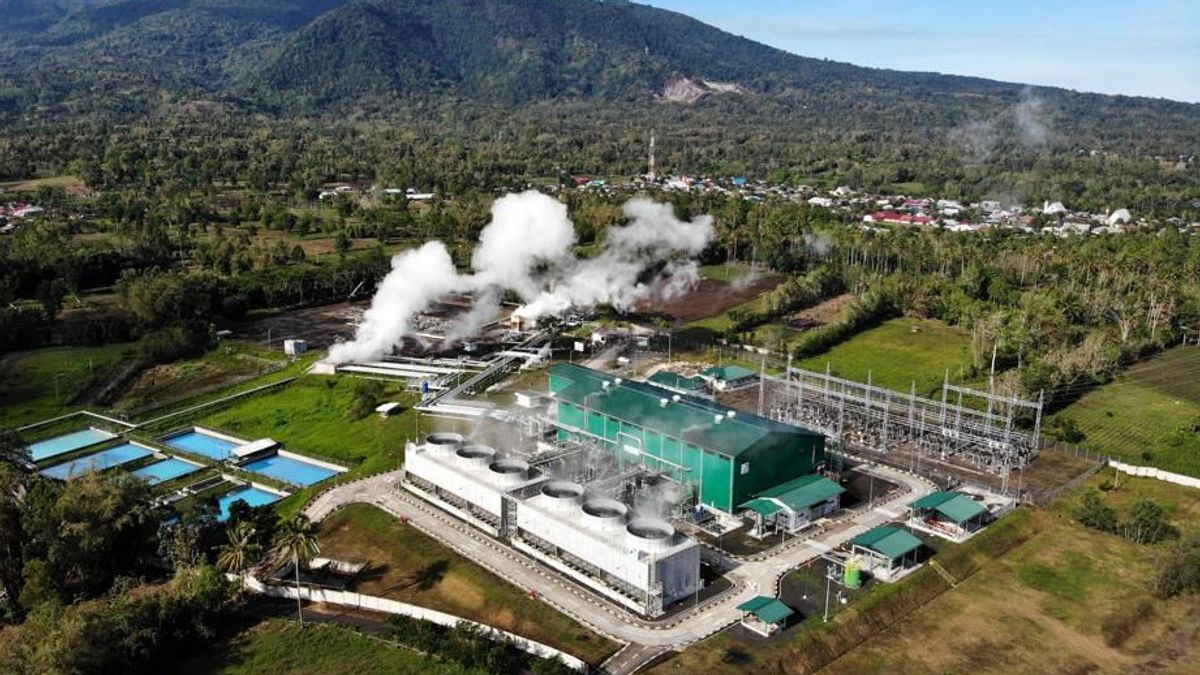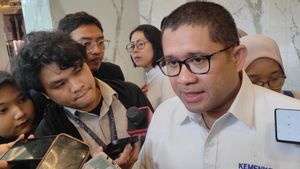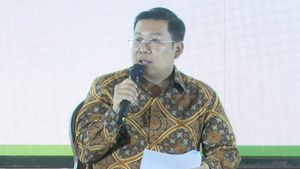JAKARTA - The government will accelerate the development of geothermal power plants (PLTP) in Indonesia. Until 2030, the government will build a geothermal power plant with a capacity of 3,355 MW to meet the new and renewable energy mix target of 23 percent by 2025.
"This is stated in the 2021-2030 RUPTL (Electricity Supply Business Plan)," said Harris, Director of Geothermal, Directorate General of New Renewable Energy and Energy Conversion, Ministry of Energy and Mineral Resources (ESDM) in a webinar entitled "The Function of Communication in Governance Manage the Renewable Energy Industry in Indonesia” held by Telkom University, Monday, April 11 yesterday.
The energy mix target of 23 percent by 2025 is part of the Government of Indonesia's commitment to achieving net zero emissions by 2060 or sooner. Indonesia has also committed to reducing greenhouse gas emissions by 29 percent by 2030.
"The transition to sustainable energy is also one of the three focuses of the Indonesian G20 Presidency," he said.
There are a number of steps and policies taken by the government to meet these targets. First, said Harris, the government will conduct government drilling to reduce the risk of developers as well as to lower the selling price of geothermal electricity. Until 2024, the government will drill in 20 geothermal working areas for a development plan of 683 MW.
Second, the use of PISP (Geothermal Sector Infrastructure Financing) and GREM (Geothermal Resources Risk Mitigation) funds to fund geothermal development. Third, the synergy between SOEs. So far, there are at least three SOEs operating in the geothermal sector, namely PT Pertamina Geothermal Energy (PGE) which is under the Sub Holding Pertamina New Renewable Energy (PNRE), PT Indonesia Power (a subsidiary of PT PLN), and PT Geothermal Energy. Dipa, BUMN under the Ministry of Finance.
Fourth, optimizing resources in WKP that are already in production with expansion and efficiency. Two of them are building a 15 MW Binary PLTP in WKP Salak, and a Binary PLTP in Dieng WKP (10 MW). Currently, PT PGE is also completing the Binary PLTP in WKP Lahendong, North Sulawesi, with a capacity of 0.5 MW.
Until the end of 2021, the installed capacity of geothermal plants in Indonesia will reach 2,276 MW, most of which are in the PT PGE Working Area, which is 1,877 MW. PT PGE manages 13 Working Areas with a capacity of 672 MW which are operated independently, and 1,205 MW through a Joint Operation Contract (JOC).
Based on the results of Wood Mackenzie's research, Indonesia is projected to become the largest geothermal player in the world by 2026.
"The installed capacity of geothermal power plants in Indonesia in 2026 will reach 5,240 MW. In that year, Indonesia will shift America from the number one position," said PT PGE President Director Ahmad Yuniarto Webinar entitled "Renewable Energy Invest in Indonesia 2022" organized by CSIS Indonesia and Southeast Strategics on Thursday, April 7th.
On this occasion, Ahmad Yuniarto added, PT PGE is currently conducting exploration, development and tender activities for EPCC (Engineering Procurement Construction Commissioning) in a number of WKP. Exploration and development activities were carried out at the Seulawah WKP (Aceh) and Sungai Penuh (Jambi), while the EPCC tender was at the Lumut Balai WKP, South Sumatra (55 MW), and Hululais, Bengkulu (110 MW).
According to Harris, apart from electricity, geothermal can be used directly for various purposes, including the agricultural sector such as tea processing, coffee bean drying, and palm sugar industry.
"The high efficiency of geothermal conversion, ranging from 80-90 percent, is a very good potential for direct use, including for tourism," he said.
PT PGE has also developed GeoAgro in the Kamojang WKP, among others, for the sterilization of Cocopeat, planting media for potatoes and mushrooms. In addition, PGE is also exploring the opening of a geothermal tourism area in the Lahendong WKP. Tomohon where the Lahendong PLTP is located is one of the tourist destinations in North Sulawesi.
These various uses are PGE's commitment to continue developing geothermal energy and ensure the implementation of Environment, Social, and Governance (ESG) to become an integrated part of PGE's geothermal business. The implementation of these ESG aspects is an effort to provide added value and support PGE to government programs related to the use of new, renewable energy that is environmentally friendly, especially geothermal.
PGE's commitment in developing geothermal energy can contribute to achieving the 7th goal of sustainable development targets (clean and affordable energy), the 8th goal (decent work and economic development), and the 13th goal (handling climate change) on Sustainable Development Goals (SDGs).
The English, Chinese, Japanese, Arabic, and French versions are automatically generated by the AI. So there may still be inaccuracies in translating, please always see Indonesian as our main language. (system supported by DigitalSiber.id)













